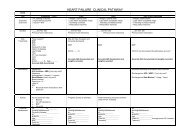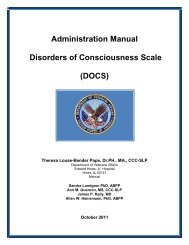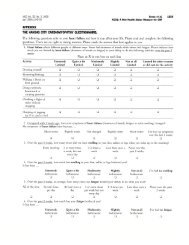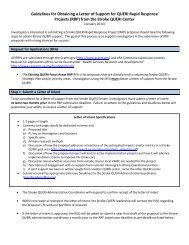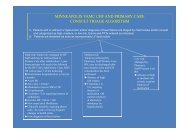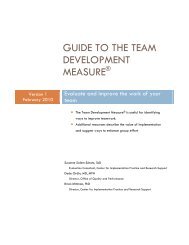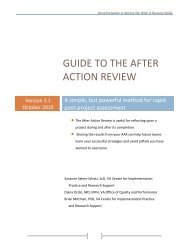The Veteran Supported Education Service Treatment Manual: VetSEd
The Veteran Supported Education Service Treatment Manual: VetSEd
The Veteran Supported Education Service Treatment Manual: VetSEd
You also want an ePaper? Increase the reach of your titles
YUMPU automatically turns print PDFs into web optimized ePapers that Google loves.
With Worksheet # 12: <strong>Education</strong> Assistance completed, work with the <strong>Veteran</strong> to<br />
compare all of the information that has been gathered. <strong>The</strong> <strong>Veteran</strong> may choose to write<br />
up several different Current Expenses/Resources/Debts sheets based on different<br />
combinations of financial aid including the GI Bill only, the GI Bill plus grants, and the<br />
GI Bill plus grants and loans. Refer to Worksheet #12: <strong>Education</strong> Assistance for<br />
questions to review for each different financial aid situation.<br />
B. Enrolling/Getting Admitted to School<br />
Once the school program is picked and the finances for going to school are worked out,<br />
the next big step is applying to the school and registering for classes.<br />
i. Applying to Schools<br />
Make a Task List<br />
Support the <strong>Veteran</strong> to get and review the application(s). Assist the <strong>Veteran</strong> in looking<br />
over each application, and making a list of the information, materials, and requirements<br />
needed to complete it. <strong>The</strong> <strong>Veteran</strong> may benefit from a task list, outlining the number of<br />
sub-tasks required to complete each piece. See Worksheet #13: Task List for Applying to<br />
School/Training Program and a sample Task List in Appendix D. Note that monitoring or<br />
support functions can be added to the Task List, to give the <strong>Veteran</strong> a vehicle through<br />
which to be accountable and supported throughout the process. <strong>The</strong> application process<br />
itself can be overwhelming, and <strong>Veteran</strong>s may not have the experience, knowledge or<br />
skills they need to apply to school. Additional supports peppered throughout the process<br />
may help the <strong>Veteran</strong> fully participate in the process.<br />
Gather information<br />
Help the <strong>Veteran</strong> to make a list of the information and materials s/he will need to have on<br />
hand when applying to the school. Examples of important materials include the<br />
application(s) for school, a resume of work, military and educational experience, lists of<br />
awards received, clubs participated in, languages spoken, interests and hobbies, etc. In<br />
particular, scores from SAT and other college admission boards may need to be sent.<br />
Write essays<br />
Support the <strong>Veteran</strong> to write required essays. Make sure to check each application to<br />
understand the particular requirements of each school. Essays should be written by the<br />
<strong>Veteran</strong>, about the <strong>Veteran</strong>‘s experiences, in a way that make the <strong>Veteran</strong> stand out in a<br />
crowd of applicants. <strong>The</strong> peer <strong>VetSEd</strong> provider may work with the <strong>Veteran</strong> to explore<br />
55 | P a g e



